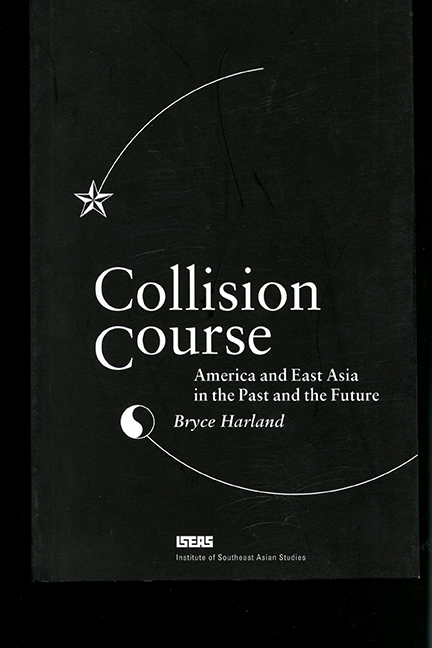Book contents
- Frontmatter
- Dedication
- Contents
- PREFACE
- INTRODUCTION
- CHAPTER 1 The West Strikes Asia
- CHAPTER 2 America Asserts Itself
- CHAPTER 3 Turmoil in China Leads to War in the Pacific
- CHAPTER 4 Cold War Sets In
- CHAPTER 5 War in Korea Deepens Confrontation
- CHAPTER 6 Vietnam – Failure, and Success
- CHAPTER 7 The Anti-Soviet Coalition
- CHAPTER 8 Japan Challenges America Again
- CHAPTER 9 Smaller Dragons Join In
- CHAPTER 10 China against a Wall
- CHAPTER 11 The Asian Diaspora
- CHAPTER 12 Regionalism in Asia
- CHAPTER 13 Whither America?
- Postscript: The Eye of the Viewer
- Bibliography
- Index
- The Author
CHAPTER 3 - Turmoil in China Leads to War in the Pacific
Published online by Cambridge University Press: 21 October 2015
- Frontmatter
- Dedication
- Contents
- PREFACE
- INTRODUCTION
- CHAPTER 1 The West Strikes Asia
- CHAPTER 2 America Asserts Itself
- CHAPTER 3 Turmoil in China Leads to War in the Pacific
- CHAPTER 4 Cold War Sets In
- CHAPTER 5 War in Korea Deepens Confrontation
- CHAPTER 6 Vietnam – Failure, and Success
- CHAPTER 7 The Anti-Soviet Coalition
- CHAPTER 8 Japan Challenges America Again
- CHAPTER 9 Smaller Dragons Join In
- CHAPTER 10 China against a Wall
- CHAPTER 11 The Asian Diaspora
- CHAPTER 12 Regionalism in Asia
- CHAPTER 13 Whither America?
- Postscript: The Eye of the Viewer
- Bibliography
- Index
- The Author
Summary
China was not dismembered by foreign powers: it merely disintegrated. Japan tried to take advantage of the collapse to establish its own ascendancy, but it ran into growing resistance, first from Chinese nationalism, and later from the United States. America refused to accept Japan's expansion at the expense of China. Its economic sanctions eventually led to war — the first war between America and an Asian power. America won, at some cost to itself, and more to others. Much of Asia was devastated. America tried to remake Japan in its own image, with partial success. But the stage was set for a Communist take-over in China.
Under the Manchu, provincial leaders had put down the Taiping and Nien rebellions, and had taken the initiative in modernizing the armed forces and the economy. In the process they took control over their own resources, and most of the Emperor's as well. After the dynasty was overthrown, one of them, Yuan Shihkai, became President of the new Republic. He quickly disposed of the parliament that had just been elected, and outlawed Sun Yatsen's Nationalist Party. But without the mystique of the Empire Yuan could not establish his authority over other provincial leaders, even when he had foreign support. And when he made himself emperor, he lost much of what support he had. After he died in 1916, another northern general became President: he tried to strengthen his position by helping Britain and France in their war with Germany. But he in turn was ousted, by a general still loyal to the Manchu, who put the boy Emperor Pu Yi back on the throne — until yet another general pushed him off again The parade went on. The forms of a national government were preserved: there was always a President recognized by the foreign powers. But Peking had lost what was left of its moral authority Provincial leaders, generals, and local strong men became a law unto themselves, and struggled for power. Without losing its nominal unity, China crumbled into a congeries of petty fiefdoms, often warring among themselves. Warlords ruled the land for the next decade.
- Type
- Chapter
- Information
- Collision CourseAmerica and East Asia in the Past and the Future, pp. 37 - 56Publisher: ISEAS–Yusof Ishak InstitutePrint publication year: 1986

